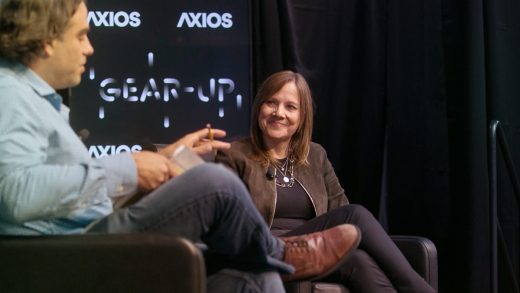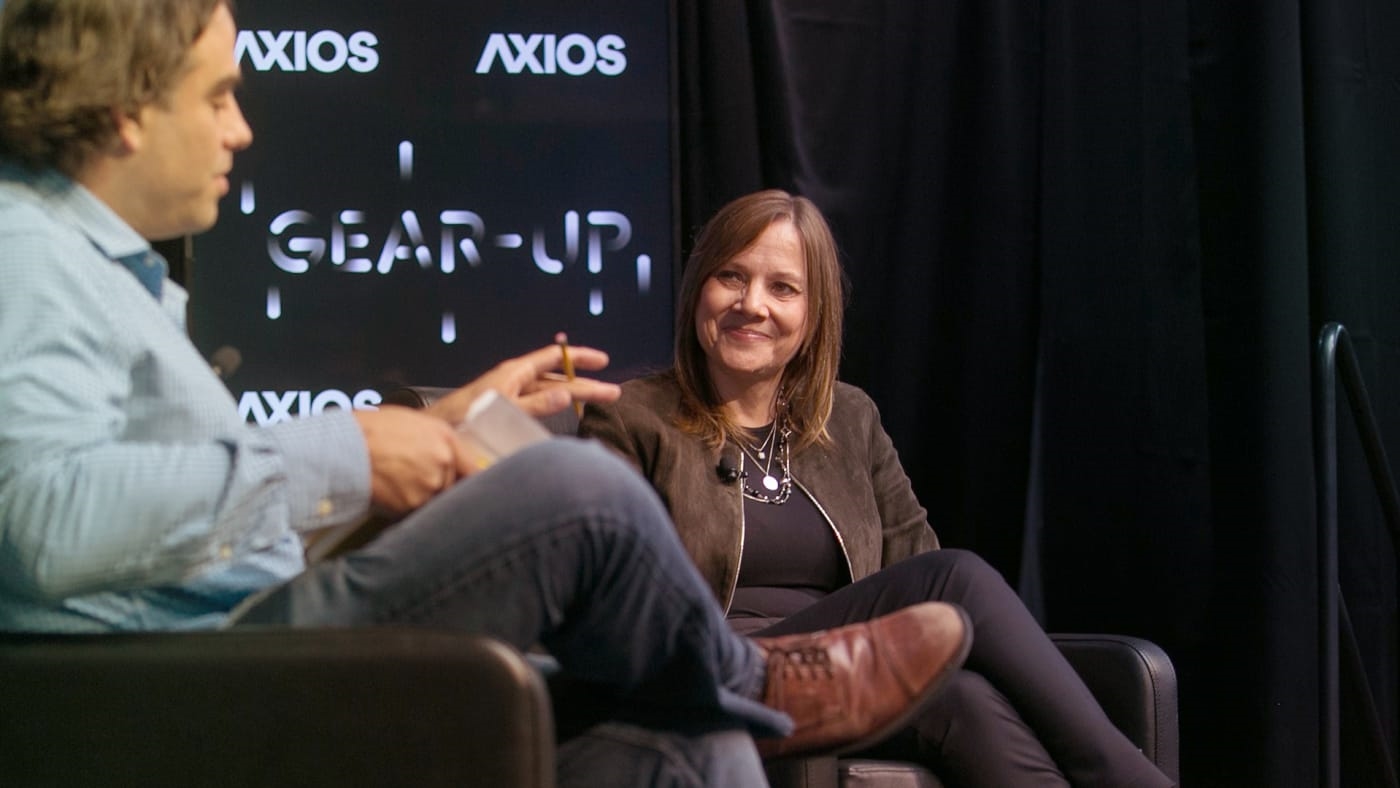GM’s Mary Barra on 4 trends that will shape the future of transportation
General Motors has invested heavily in electric vehicles, created a digital in-car marketplace for finding everything from gas to coffee, has an affordable electric vehicle with nearly as much range as a Tesla, bought a self-driving car startup now valued at $11.5 billion, and is building out a comprehensive network of shared cars on par with (if not better than) Google’s self-driving outfit, Waymo.
But the company still lacks the cachet of its Silicon Valley counterparts, a fact frequently reflected in its stock price. While Wall Street still seems to love Tesla, a company that has never achieved recurring profitability and constantly misses production deadlines, it is less optimistic on GM.
Unlike Tesla, GM doesn’t have a reputation for being an innovator, but CEO Mary Barra is trying to change that narrative, not only as a way to improve GM’s stock price, but to woo the best talent. That’s why last Friday, she touched down on Harvard’s campus to educate students on its future of mobility plans in the hopes they might come work for the company. Barra has spent the last two years molding GM into the kind of company that millennials might want to work for. Today, the company hires someone for a full-time science, technology, engineering, or mathematics position every 26 minutes.
“There’s so much software that is now on the vehicle, and, in may cases, software is replacing mechanical systems,” she told me last week. “There’s going to be a point where we’re going to be upgrading and improving cars as opposed to fixing them.”
Barra also has a big promise to fulfill: GM’s electric vehicles will be profitable by 2021. Already the company has spent roughly $34 million consolidating and expanding its battery testing operations in Warren, Michigan. It is also reportedly reducing the use of cobalt, an expensive element of electric car battery technology that is also in short supply. Tesla has similarly promised to drop its cobalt use to zero.
What makes this benchmark so grand is that no company has been able to make electric cars profitable. Tesla, as stated earlier, continually loses money on its cars, though the company has said that it will be profitable in the third quarter of this year. Toyota, which first popularized alternative energy vehicles with its affordable hybrid Prius, has historically been skeptical of long-range all-electric vehicles because of the cost required to make them. Suffice to say, GM has a lot of work ahead of it.
Fast Company spoke with Barra about GM’s immediate priorities and the broader, bigger vision that it’s working toward. The below conversation has been edited for length and clarity.
Fast Company: Who are you hiring these days?
Mary Barra: A focus on electrical and software engineering. It’s key for us.
FC: This year we witnessed the first autonomous car fatality, and it seems across the industry self-driving cars are having difficulty in the largely human-driven car world. Do you still think that 2019 is the year that GM will roll out steering wheel-less autonomous cars?
MB: We’re still on track and hitting our milestones to be able to deploy a self-driving vehicle in a fleet situation, inside a geo-fenced ride-share environment, next year. Being in a complex environment like San Francisco really maximizes the learning the vehicle does every day. We have those autonomous vehicles with steering wheels and without. Some of that is a regulatory issue of what will be required to be on a vehicle at that point in time.
FC: When do you think you’ll actually be able to sell self-driving cars as opposed to using them in shared fleets?
MB: What’s going to happen is the technology will continue to learn and be able to handle tunnels and snow and different types of elements that will just continue to expand the geo-fenced area that it can operate in. As the ability of these cars goes up, we’ll be working [to keep] our technology costs down, which will open up more and more opportunities to deploy vehicles broadly. I also think a lot of it will depend on how the whole ecosystem builds out and what the regulations are.
FC: What will it take for us to get to that tipping point for consumers to really lean into EVs?
MB: Clearly, having the Chevrolet Bolt EV with a 238-mile range was a huge step forward in reducing people’s range anxiety. The next thing they have is charge anxiety. So when I do need to charge, is there going to be infrastructure? On the Chevrolet Bolt EV, we have an app that helps you, say, if I’m going from point A to point B and I’m going to need to charge, here’s the place to charge. So, you know, taking out that mystery of, “Will there be a charge when I need one?”
I think you’re going to see the charging infrastructure across the country continue to grow, though frankly it’s bigger now than most people think. And so I think completing the charging infrastructure and really deploying the app-charging capabilities, so when people need to stop to charge, it’s a stop similar to what you do when you gas up today.
Then we will drive to profitability, and that changes the game as well. So I think those three things are going to happen in the next few years in tandem.
FC: What does the future of transport look like to you?
MB: Well, we see four major areas that are transforming the way people move today, and one is propulsion. That’s our focus on electrification. We’re putting significant investment there, not only in electric vehicles but fuel-cell electric vehicles. The next is autonomous, and clearly we’re putting significant investment there. The next is connectivity, and we think we’re just scratching the surface of how we can really create value for consumers from a connected point of view. And then the last is sharing, which we’re also making investments in with Maven.
So when we look at the four major trends that are changing the industry, changing the way people move about, we want to be involved in all of those in appropriate ways. That’s why we’re deploying our investments, because we think with General Motors’ capability, we can add value.
(20)



